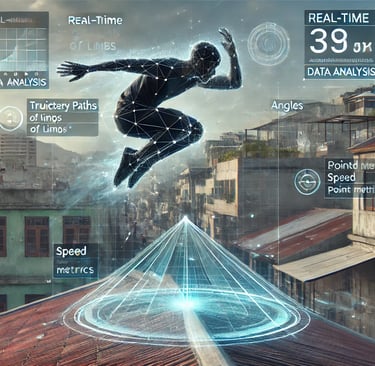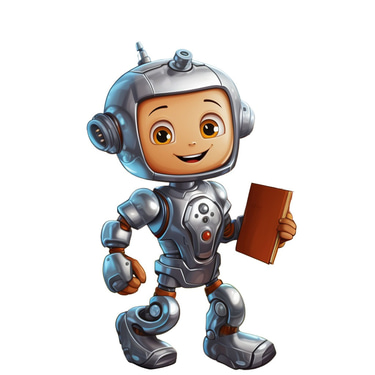AI in Animation: How AI Could Create Awesome Cartoons and Movies
7/3/20244 min read


Introduction to AI in Animation
Artificial Intelligence (AI) is revolutionizing the animation industry, bringing significant changes to the way cartoons and movies are created. Historically, animation has been a labor-intensive process, requiring meticulous hand-drawn frames or complex 3D modeling. However, advancements in technology, particularly in AI, have transformed this landscape, making the animation process more efficient and accessible.
The integration of AI into animation can be traced back to several key milestones. Early developments in machine learning algorithms laid the foundation for more sophisticated techniques. The advent of deep learning and neural networks has further propelled the capabilities of AI in animation, enabling more natural and lifelike animations. These technologies have allowed for the automation of various stages in the animation pipeline, from initial sketching to final rendering, thus streamlining the entire process.
One of the most notable breakthroughs in AI animation is the use of generative adversarial networks (GANs). GANs have the ability to generate highly realistic images and animations by learning from vast datasets. This has opened up new possibilities for animators, allowing them to create complex scenes and characters with unprecedented ease and accuracy. Additionally, AI-driven tools can now assist in tasks such as lip-syncing, motion capture, and background generation, significantly reducing production time and costs.
Another important aspect of AI in animation is its accessibility. In the past, high-quality animation was often limited to large studios with substantial budgets. Today, AI tools are becoming increasingly available to independent animators and smaller studios. This democratization of technology is fostering a more diverse range of creative voices in the animation industry, as independent creators can now produce professional-grade animations without the need for extensive resources.
In conclusion, the integration of AI in animation represents a significant shift in the industry. By streamlining workflows, reducing costs, and enhancing creative possibilities, AI is not only transforming how animations are made but also who gets to make them. As AI technology continues to evolve, its impact on the animation industry is likely to grow, ushering in a new era of innovation and creativity.
Applications of AI in Animation Production
Artificial intelligence is revolutionizing the animation industry by introducing innovative methods to streamline various stages of production. One prominent application of AI in animation is automated character animation. AI algorithms can analyze motion capture data to create realistic movements and expressions for characters, significantly reducing the time and effort required from animators. Tools like DeepMotion and Adobe Character Animator leverage AI to facilitate real-time character animation, enabling creators to produce high-quality animations with greater efficiency.
AI-driven storyboarding is another area where artificial intelligence is making significant strides. Traditional storyboarding can be a labor-intensive process, but AI tools like Storyboard That and Plotagon utilize advanced algorithms to assist in creating detailed storyboards quickly. These tools can generate storyboards from scripts, allowing for rapid prototyping and iteration, which is particularly beneficial during the pre-production phase.
Enhanced visual effects (VFX) are also being achieved through AI technologies. AI-powered software such as Runway ML and NVIDIA's GauGAN enable animators to create stunning visual effects with minimal manual input. By using machine learning models, these tools can generate complex environments and realistic textures, which would otherwise require extensive manual effort. Procedural generation of environments, enabled by AI, allows animators to create expansive and detailed worlds efficiently, as seen in projects like "The Mandalorian," which utilized AI-driven techniques for its virtual sets.
Real-time rendering is yet another application of AI in animation production. Traditional rendering can be a time-consuming process, but AI-powered engines like Unreal Engine and Unity utilize machine learning to accelerate rendering times while maintaining high visual fidelity. This capability is particularly advantageous for animators working on projects with tight deadlines, as it allows for quicker iterations and adjustments.
AI's ability to improve the efficiency of rendering complex scenes is exemplified by recent animated projects. For instance, Pixar's "Soul" incorporated AI-enhanced rendering techniques to achieve its visually stunning scenes. By employing AI, animators were able to focus more on the creative aspects of the production, resulting in a more polished final product.
In summary, AI is playing a transformative role in animation production by automating labor-intensive tasks, enhancing visual effects, and improving overall efficiency. As AI technologies continue to advance, their integration into animation workflows is likely to become even more pervasive, ushering in a new era of innovation and creativity in the industry.
The Future of AI in Animation: Opportunities and Challenges
The future of AI in animation holds immense potential, with emerging trends pointing towards a transformative impact on the industry. One of the most promising developments is the use of AI for personalized content creation. By analyzing viewer preferences, AI can customize animations to cater to individual tastes, enhancing engagement and satisfaction. This personalization extends to interactive storytelling, where AI can adapt narratives in real-time based on audience interactions, creating a more immersive experience.
Another exciting possibility is the generation of entire short films or series with minimal human intervention. AI algorithms can handle various aspects of animation, from character design to voice synthesis, streamlining the production process and reducing costs. This could democratize content creation, allowing independent creators to produce high-quality animations without extensive resources.
However, these advancements come with significant ethical considerations and potential challenges. One major concern is the impact on employment for traditional animators. As AI takes over more tasks, the demand for human animators might decrease, leading to job displacement. It is crucial to address this issue by providing retraining opportunities and exploring new roles where human creativity and AI can complement each other.
Quality and originality of AI-generated content also pose challenges. While AI can produce technically proficient animations, the depth of creativity and emotional resonance found in human-created work may be difficult to replicate. Ensuring that AI-generated content maintains a high standard and does not become repetitive or uninspired is essential for the industry's long-term success.
Additionally, the integration of AI in animation necessitates the development of regulatory frameworks. These regulations should address issues such as intellectual property rights, transparency in AI usage, and ethical considerations in content creation. A balanced approach is needed to foster innovation while safeguarding the interests of creators and consumers.
In conclusion, AI has the potential to revolutionize the animation industry, offering exciting opportunities for personalized content and streamlined production. However, addressing the associated ethical and practical challenges is crucial to ensure a future where AI and human creativity can coexist and thrive.
